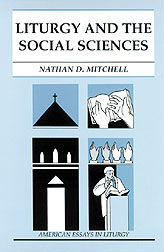
|
Posted July 31, 2006
Book: Liturgy and the Social Sciences Author: Nathan D. Mitchell The Liturgical Press. Collegeville, MN. 1999. Pp. 93 An Excerpt from the Jacket:
That was the question posed famously by Romano Guardini in a letter written in 1964 to liturgists meeting in the German city of Mainz. Guardini believed that the future of liturgical renewal lay not in "improved texts," nor in the recovery of some mythic "golden age," nor in the "rearrangement of furniture," but in relearning ritual behavior. Christian ritual, Guardini believed, is not the contemplative act of an individual but the public deed of an assembly - a community gathered in faith and prayer in obedience to Jesus' command. Can people and presiders today relearn this communal way of "doing"? Can they learn to "read" ritual acts simply by doing them, by performing them - without being self-conscious, theatrical, and fussy? Over the past thrity-five years, Christian liturgists have sought to reinterpret ritual's multiple meanings by transplanting insights from the social sociences (sociology, anthropology). Have the transplants worked? This book tries to answer that question. An Excerpt from the Book: Ritual embraces these characteristics: Ritual is neighter an obsessive neurosis or an artificial construct imposed on life from the outsider; rather, ritual is expressive, formalized, traditional, authoritative, nonutilitarian, symbolic, invariable, repeatable behavior whose remote roots are closely linked to the ontogenetic development of the human person. Although individuals may engage in idiosyncratic "rituals" of their own devising, the term is best reserved for actions that are public, social and collective (rather than strictly personal or private) in nature. Ritual embodies and transmits vital cultural information and processes (meanings, values, categories, classifications, contraditions) that support the collective identity and social cohesion of participants. Ritual does not merely reinforce already existing symbols and social structures; it may also generate or promote the emergence of new, transformative structures. Ritual is often (but not only) linked to social transitions (to rites of passage or life-crisis events). While its primary intention is to promote social cohesion and identity, ritual may sometimes encourage or legitimate social change and adaptation. Rituals preserve and represent archaic acts, ancestral memories and so provide access to the historic past - hence, a community without rituals is a community without a memory. A ritual's power is rooted in repetition and familiarity rather than unexpected novelty or innovation. Rituals are rehearsals both of who a community is (in its present life) and of what it means to become (in its eschatological future). Ritual orders and regulates social life, and thus it characteristically resists radical change, experimentation or improvisation. In a word, ritual is essentially a way to regulate social life; to shape personal and corporate identity; to review and renew values; to express and transmit meaning in symbolic word and act; to preserve tradition; and to insure cultural cohesion and continuity. It is not an "efficient" or "utilitarian" way of acting. On the contrary, ritual acts are characteristically ambiguous, septic, multiple in meaning (and hence, not instantly clear or intelligible). For the most part, rituals are nonverbal deeds, not texts; they are "performances done by heart," without intrusive explanation or commentary. Moreover, the ritual version of reality is considered normative not only for participants' beliefs (doctrine) but for their behaviors as well (ethics). Table of Contents: 1. The search for ritual's roots in anthropology Introduction Beginnings Ritual: definitions, characteristics, purposes, strategies The emergence of a prevailing consensus Summary 2. Critiquing the "Classic" consensus A ritual wasteland? A new category: "emerging ritual" Reevaluating Victor Turner Summary 3. New directions in ritual research Ritual and the technology of the self Ritual, religion and "critical" anthropology |
|
